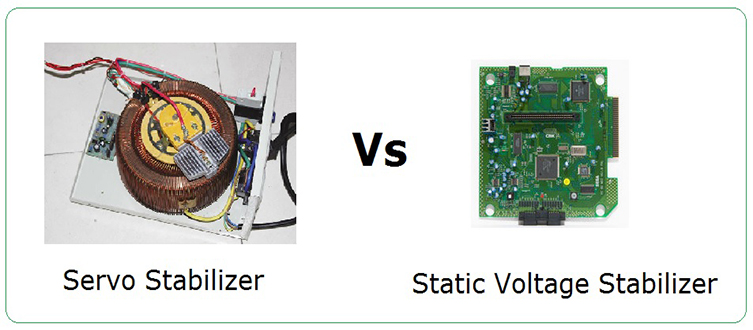Product Category
- Contact Us
 Tel:
Tel: 0086-577-61726373
 Fax:
Fax: 0086-577-61712103
 E-mail:
E-mail:
 Address:
Address: No.88 Liuqing North Road,Liushi Town,Yueqing City,Zhejiang Province,China
News
You are here: Home » News
What are differences between Static Voltage Stabilizer and Servo Stabilizer?
Visit: 2433 Date: 2015-10-14
Static Voltage Stabilizer VS Servo type stabilizer

1. Voltage Correction speed:
It does not contains any moving part. Static voltage stabilizer has pure electronic circuit to achieve correction in voltages. Hence static stabilizer has exceptionally high voltage correction speed than servo voltage stabilizer. Voltage correction speed to SVS can be in range of 360 to 500 V/sec. On other hand Servo stabilizer has moving servo motor with help of which it achieves correction in voltage. Servo stabilizer is electromechanical device hence its voltage correction speed is slower than static voltage stabilizer.
2. Correction Time:
Due to high voltage correction speed static voltage stabilizer has low correction time of 20 to 30 millisecond as compared to servo stabilizer correction time of 50 milliseconds to 5 Seconds.
3. Maintenance:
Since Servo stabilizer has moving servo motor hence it has regular wear and tear which needs maintenance. Due to static nature of Static voltage regulator it don't need maintenance.
4. Reliability:
In servo voltage stabilizer correction in voltage achieve by increasing or decreasing no of winding in autotransformer with help of shaft of servo motor. This increases or decreases voltage across primary of buck boost transformer in turn secondary of buck boost transformer and hence correcting output voltage. Hence reliability of servo voltage regulator is mainly depend on reliability of servo motor. Similarly reliability of static voltage stabilizer depends on reliability of IGBT power stage. In General static IGBT power stage is more reliable than electromechanical servo motor hence SVS are more reliable than servo regulator.
5. Auto Bypass facility:
In static voltage stabilizer providing auto bypass is very easy. And due to fast electronic nature, SVS can transfer to bypass automatically and without break in output voltage (zero transition time) in case of even of fault. In servo voltage stabilizer it is complicated to provide auto bypass mechanism and even it provided it becomes very costly proposition and transition to bypass ill be with break in output voltage (needs transition time).
 English
English Pусский
Pусский

